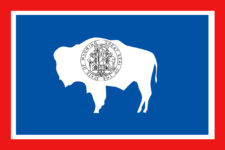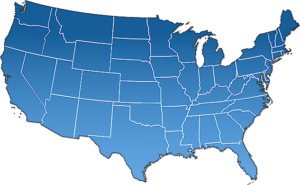 It used to be a relatively rare event when a bill remedying errors or omissions in public notice advertising was introduced. Or when legislation authorizing newspaper websites or e-editions to substitute for print was proposed. But those types of measures have proliferated in 2023, along with bills designed to fill jurisdictional holes in news deserts, which have been picking up steam for a few years now.
It used to be a relatively rare event when a bill remedying errors or omissions in public notice advertising was introduced. Or when legislation authorizing newspaper websites or e-editions to substitute for print was proposed. But those types of measures have proliferated in 2023, along with bills designed to fill jurisdictional holes in news deserts, which have been picking up steam for a few years now.
Interim committees signal potential trouble ahead
 Many in the newspaper industry are wondering how public notice laws will fare in light of the fiscal crises precipitated in many states by the pandemic. Interim committee hearings last month in Wyoming and Arkansas suggest the answer may depend, at least in part, on the size and scale of each state’s budget deficit.
Many in the newspaper industry are wondering how public notice laws will fare in light of the fiscal crises precipitated in many states by the pandemic. Interim committee hearings last month in Wyoming and Arkansas suggest the answer may depend, at least in part, on the size and scale of each state’s budget deficit.
The Sept. 11 hearing in Cheyenne left Wyoming Press Association (WPA) Executive Director Darcie Hoffland in a state of heightened concern. By a 10-3 vote, the joint Corporations, Elections & Political Subdivisions Committee approved a motion to direct the Legislative Service Office to draft a bill that would move notices for meeting minutes and government-employee salaries from newspapers to local government websites. [CORRECTION: An earlier version of this story mistakenly stated the motion was “to introduce a bill next session” that would move the notices.]
Hog farm saga comes to an end
 In December 2012, residents of Newton County, Arkansas were surprised to see a hog farm being built on the banks of Big Creek, a tributary on the Buffalo National River. The state’s Department of Environmental Quality (ADEQ) had approved a permit for C&H Hog Farms to operate the Concentrated Animal Feeding Operation (CAFO). Notice about the farm was published that summer on ADEQ’s website but not in a local newspaper.
In December 2012, residents of Newton County, Arkansas were surprised to see a hog farm being built on the banks of Big Creek, a tributary on the Buffalo National River. The state’s Department of Environmental Quality (ADEQ) had approved a permit for C&H Hog Farms to operate the Concentrated Animal Feeding Operation (CAFO). Notice about the farm was published that summer on ADEQ’s website but not in a local newspaper.
Several years of lawsuits and increased environmental activism followed.
As legislatures adjourn for the year, newspaper notice as strong as ever
We’ve heard dire warnings for many years that public notice would soon be moving from newspapers to the internet. Yet here we are, twenty years after the pessimists first began predicting doom, and newspapers are still the primary vehicle for official notice in all 50 states.
 And after several mostly successful years defending public notice in state legislatures, the newspaper industry is faring especially well on that front in 2019. With 33 legislative bodies already shuttered for the year and eight others scheduled to adjourn sine die by the end of the month, the third leg of the government-transparency stool is looking pretty stable.
And after several mostly successful years defending public notice in state legislatures, the newspaper industry is faring especially well on that front in 2019. With 33 legislative bodies already shuttered for the year and eight others scheduled to adjourn sine die by the end of the month, the third leg of the government-transparency stool is looking pretty stable.
In year of heightened legislative activity, Arkansas and Virginia score big wins
 We’re only four months into the year and more public notice bills* have already been enacted than in all of 2018.
We’re only four months into the year and more public notice bills* have already been enacted than in all of 2018.
Like 2018, the truly bad bills — the existential threats to newspaper notice — are either going nowhere or have already been defeated. The two state press groups that appeared to face the greatest danger — Missouri Press Association and Hoosier State Press Association, both of which fought bills that would have eliminated newspaper notice of foreclosure sales — survived to fight another day. Indiana HB1212 passed the House but died in the Senate when the legislature adjourned last week. Missouri HB686/SB50 hasn’t managed to make it out of committee in either chamber with only two weeks left in the session even though an almost-identical piece of legislation came dangerously close to passage in 2018.
Nevada the Latest Public Notice Trouble Spot
 Legislation that would authorize radio and television station websites to publish public notices in Nevada has become a serious threat to newspapers in the state, according to the Nevada Press Association (NPA). Senate Bill 218 would establish broadcaster websites as an alternative to newspapers for all legislatively mandated notices in the state, including foreclosure and other private-party notices.
Legislation that would authorize radio and television station websites to publish public notices in Nevada has become a serious threat to newspapers in the state, according to the Nevada Press Association (NPA). Senate Bill 218 would establish broadcaster websites as an alternative to newspapers for all legislatively mandated notices in the state, including foreclosure and other private-party notices.
